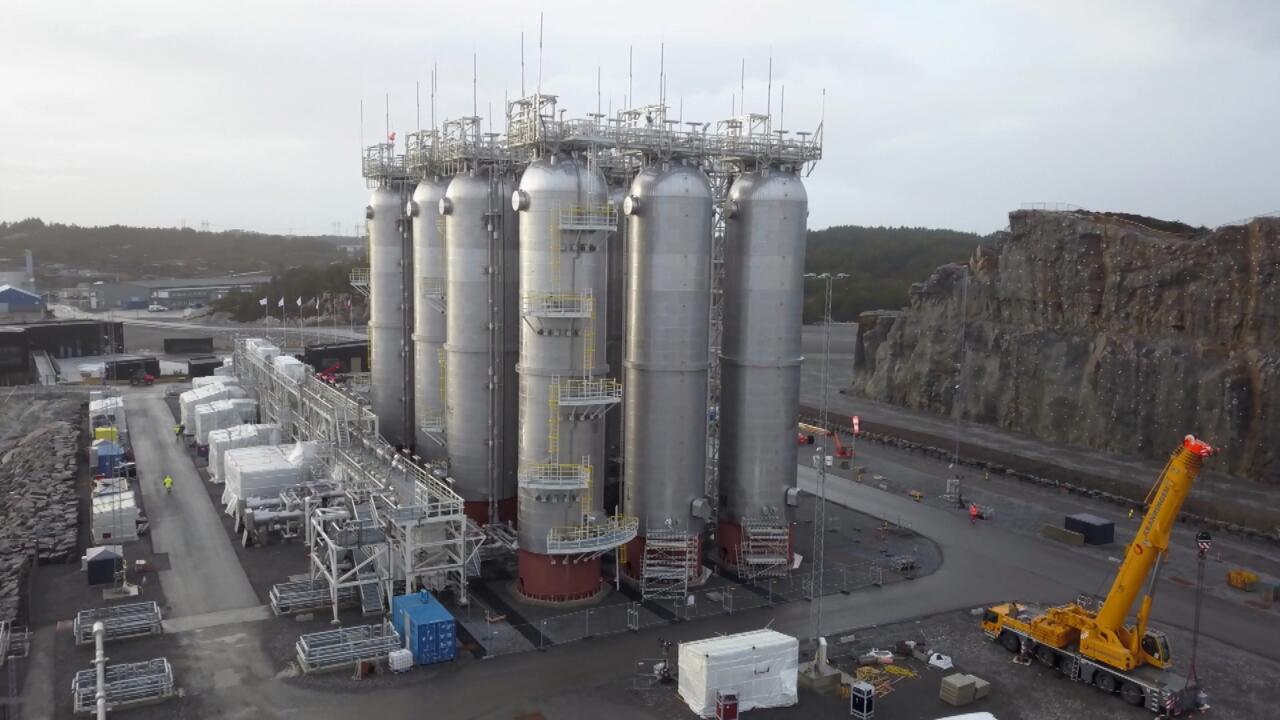Trapping CO2 in cement factory chimneys
Globally, cement manufacturing accounts for 7% of greenhouse gas emissions, three times more than all commercial flights on the planet – which account for some 2.5% of global carbon emissions. CO2. This is why the Heidelberg factory in Brevik, Norway, plans to use the Northern Lights project to capture 50% of the CO2 emitted by its chimneys and store it. The gas will be isolated from the rest of the emissions, then cooled and liquefied before being shipped by special ships to western Norway.
Separating CO2 from other waste gases is expensive and energy-intensive, but the capture device will also recycle heat from the Brevik cement plant. Cement production is notoriously difficult to decarbonize, and the facility can currently only reduce its emissions by a third via other means. To halve its carbon footprint, carbon capture and storage (CCS) are the only means available to the cement manufacturer.
The final resting place of CO2
The boats will disembark at the platform jetty created by Northern Lights in Øygarden, where a set of pumps will discharge the liquefied CO2 into the terminal tanks. From there, a gas pipeline will transport it 100 kilometers from the coast, where it will be injected at a depth of 2,600 meters, in the depths of the earth's crust.
The underwater aquifer will thus store up to 1.5 million tonnes per year in its first phase, the objective being to increase to 5 million tonnes per year by 2030. There is no shortage of customers: in addition to the cement manufacturer Heidelberg Materials, Dutch fertilizer giant Yara and a leading energy company have already signed contracts to bury 1.23 million tonnes of CO2 per year.
Børre Jacobsen, managing director of Northern Lights, believes that if demand increases enough in the coming years, pipelines could emerge across Europe to transport carbon from industrial complexes directly to facilities like this. In France, Dunkirk and Fos-sur-Mer, two port areas representing almost half of industrial CO2 emissions, will also benefit from an allocation of 17 million euros as part of the France 2030 investment plan The objective is to design new methods of producing and capturing CO2.
A cash cow for oil and gas giants
The government funded 80% of this project, but it is Total, Shell and Equinor who are implementing it. Drilling wells, transporting liquefied gas, building gas pipelines... This is the same technology as for oil and gas extraction, because oil companies have been injecting CO2 into wells since the 1950s to extract more oil from aging fields.
Does it make sense to place the fossil fuel industry at the heart of the climate solution?
Norway: Petroleum state today, storage giant tomorrow
Norwegian ambitions in the field of carbon capture and storage are still in their infancy. The Minister of Trade and Industry, Jan Christian Vestre, has already announced to France 24 a national carbon storage capacity of 40 million tonnes per year by 2030.
He adds that Norway will lead the EU in CO2 storage, touting his country's decades of experience in fossil extraction.
A greenwashing exercise
?
But isn’t that a way to get around the climate emergency? Don't the big polluters give with one hand what they take with the other? Capture and store CO2 while intensifying the high-emission practices that are at the origin of the current crisis?
Silje Lundberg, from the NGO Oil Change International, condemns the project as an act of Greenwashing: "The fact that Total, Equinor and Shell are the ones financing this project shows that they are using it as a way to prolong the industry instead of looking for real solutions."
The France 24 summary of the week
invites you to look back at the news that marked the week
I subscribe
Take international news everywhere with you! Download the France 24 application

